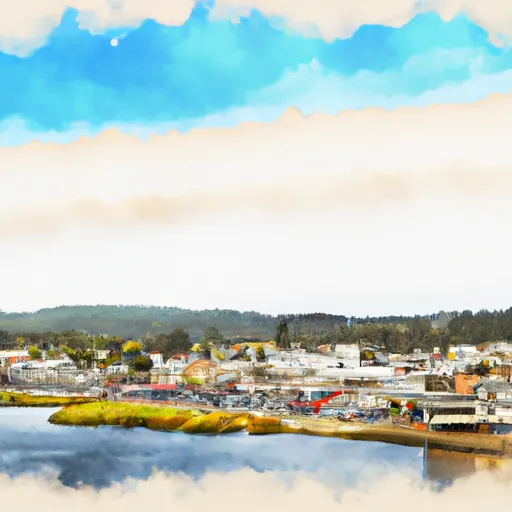°F
°F
mph
Windspeed
%
Humidity











Winchester Bay is a picturesque coastal community located in Douglas County, Oregon. Situated at the mouth of the Umpqua River, it boasts a unique climate influenced by both the Pacific Ocean and the nearby coastal mountain range. The region experiences mild temperatures with cool, damp winters and warm, dry summers. The average annual precipitation is around 70 inches, making it ideal for lush vegetation.
The hydrology of Winchester Bay is primarily characterized by the Umpqua River, which flows into the Pacific Ocean nearby. The river supports a diverse ecosystem and provides ample opportunities for fishing, boating, and other water-based activities. The area is also home to several creeks and wetlands, further enhancing its natural beauty.
Outdoor recreation enthusiasts will find plenty of opportunities to explore in Winchester Bay. The nearby Oregon Dunes National Recreation Area offers miles of sandy dunes perfect for off-roading, sandboarding, and hiking. The Umpqua Lighthouse State Park is another popular destination, offering camping, picnicking, and beach access. Additionally, visitors can enjoy birdwatching, beachcombing, and wildlife spotting in the surrounding areas. Winchester Bay provides a perfect blend of natural beauty, outdoor activities, and a mild coastal climate, making it an appealing destination for nature lovers.
Weather Forecast
Winchester-Bay receives approximately 1915mm of rain per year, with humidity levels near 72% and air temperatures averaging around 12°C. Winchester-Bay has a plant hardyness factor of 9, meaning plants and agriculture in this region tend to thrive here all year round.
Regional Streamflow Levels
4,150
Cubic Feet Per Second
2,240
Cubic Feet Per Second
10,500
Cubic Feet Per Second
37,000
Cubic Feet Per Second
Nearby Camping
| Camping Area | Reservations | Toilets | Showers |
|---|---|---|---|
| Port Of Siuslaw RV Campground and Marina | |||
| Archie Knowles | |||
| Rooke - Higgins County Park | |||
| Smith River Falls | |||
| Honeyman State Park | |||
| Tyee |



